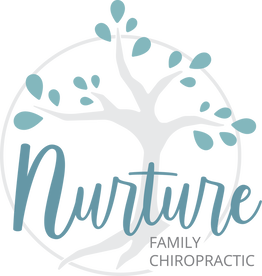|
Happy Friday! :)
We've got some exciting news! We're looking to expand your health team and available services through adding a PHYSIOTHERAPIST at Nurture Family Chiropractic! If you, or anyone you know, know a physiotherapist who's excited to join a multi-disciplinary clinic that focuses on listening to the patient's needs and addressing them appropriately through an evidence-based, patient-centred model of care, please let them know their Nurture family is eager to meet them! Please feel free to share our contact info below: Email: [email protected] Phone: 5192654204 Facebook: tag a friend or DM us
0 Comments
Fall is upon us! Crisp air, sweater weather and vibrant multi-coloured leaves all around Guelph. It is a beautiful season that makes Guelph even more picturesque (is that even possible for this cute city?). And while we're all out and about enjoying the brisk weather this season has to offer, part of this season includes raking leaves. Raking leaves can lead to an awesome pile of leaves for the children (or yourself, no judgement) to jump into but it can also lead to some body aches and pains, especially low back pain. Here are some tips and tricks for proper raking technique that can help reduce the chance of injury so you can enjoy Autumn.
1. Choosing the right rake The job is always easier when you have the right equipment. And that 'right equipment' can also prevent injury. The proper rake is about chin height for yourself. If the rake it too tall or short, it can lead to unnecessary bending or reaching which puts you at risk for low back pain or shoulder pain. 2. Warm up before raking Yeh, yeh, everyone always says to warm up before doing physical activity. And for good reason! Doing some light stretching and moving before going full force at raking can help prepare your body for that task. Gentle movements like marching on a spot and shoulder rolls can help to warm up your body and circulate blood through your tissues which make them much more resilient to intensive physical labour. 3. Proper raking posture Hard to do 100% of the time, but worthwhile making an effort to do. Keep your back straight while raking and try alternating arms to avoid prolonged repetitive motions. Also try alternating the pushing and pulling of your rake to work out different parts of your body equally. Try to avoid twisting motions which can place extra stress on your low back. If you need to lift a bag or pile of leaves, keep your core engaged and bend using your knees and not your back. Also, hug the bag/pile of leaves close to your body before attempting to lift it. 4. Take breaks It is recommended to take a few minutes of break every 20min of raking. But it can be easy to fall into the trap of wanting to rake the entire yard in one go. Though that may appear to be a more effective use of your time, I can also assure you that it will also be more effective at increasing your risk of injury. Instead, try to approach it with this mentality: Would I rather save 10-20min of break time, get the job done faster and increase my risk of injury while raking or would I rather spend the extra 10-20mins actually taking a break from raking, take a little longer to get the job done but also decrease my risk of injury? In the long term, it is worth it to spend an extra 10-20min taking a break because most injuries can't recover fully in 10-20mins. And of course, don't forget to hydrate! 5. Dress appropriately Wearing proper shoes that have grip can prevent you from slipping and falling from damp leaves. Wearing work gloves can help prevent blisters on your hands. Wear clothes for appropriate warmth to help prevent muscle cramping. If you or anyone you know have a lot of leaves to rake, come visit Dr. Brenda Yee or Katrina Zantinge to help get your body ready for raking or treat any existing body aches and pains so you can get raking! Spoiler Alert! Having 6-pack abs doesn't always equate to having a strong core. Why? Your core is formed from sooo many more muscles than just those rock hard, chizeled abs that many are obsessed about. Your core is made up of your obliques, your low back muscles, and yes, the famous rectus abdominus muscle. In other words, your core is pretty much made up of everything BUT your arm and leg muscles and in that sense, it REALLY is the CORE of your body. Check out the video below for more info about your core and how you can strengthen it to decrease low back pain! Ever get a pinching, catching or clicking sound in your hip? Is it painful? One reason that could contribute to the symptoms you experience in your hip are tight hip flexors. Your major hip flexor muscles consist of rectus femoris, psoas and iliacus (aka iliopsoas) and sartorius. These muscles attach on various positions of your hip bone (aka inominate bone) and your leg (aka femur or tibia). The special orientation of these muscle attachments to bone allow you create motion in your hip joint through muscle contractions, bringing your knee closer to your chest (aka hip flexion). Prolonged sitting can cause these hip flexor muscles to become tight or fatigued resulting in some of those pinching, catching or clicking sounds in your hip. Check out the video below from your favourite Guelph duo for some stretches and strengthening exercises to combat those tight hip flexors! If your symptoms in your hip dont go away after trying these stretches or exercises then it may be time to visit your local chiropractor to figure out exactly what's causing your hip discomfort. |
AuthorDr. Yee Archives
May 2024
Categories |
Location77 Westmount Rd
Suite 208 Guelph, ON. N1H 5J1 |
|



 RSS Feed
RSS Feed